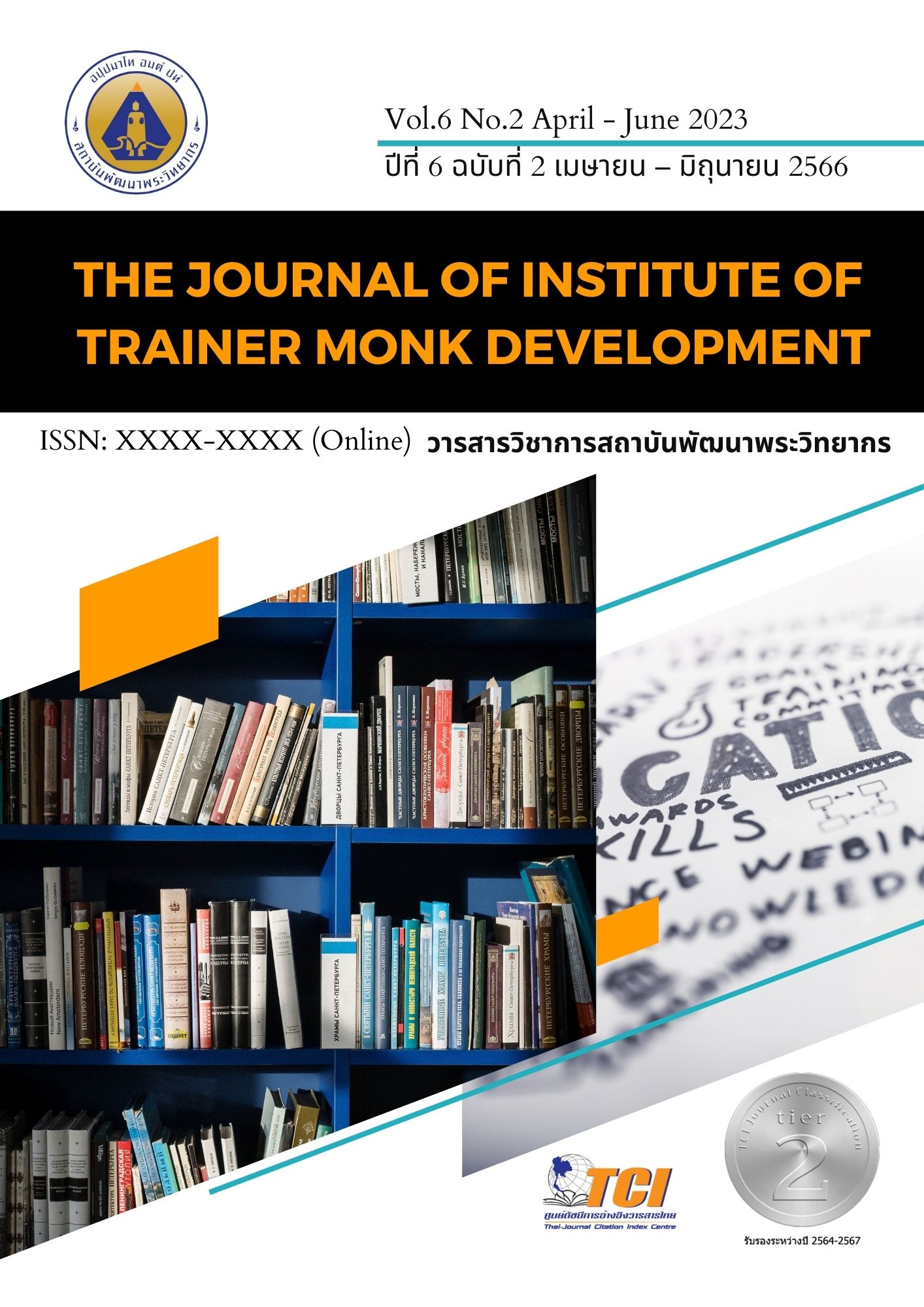Analyzing the Ethical values Found in the Buddhist Arts of Wat Suvarnabhumi Buddhajayanti Bang Sao Thong District Samut Prakan Province
Main Article Content
Abstract
This Article aimed to study with the objective to study the Buddhist art that appears in Theravada Buddhism; to study the ethics that appear in the Buddhist art in Wat Suvarnabhumi Buddhajayanti. and to analyze the ethical values that appear in the Buddhist art of Wat Suwannaphum Buddhajayanti. This research employed the documentary research methodology. The research results were found as follows; 1) The Buddha was still alive. There is still no clear evidence that Buddhist art has been created in any way. There is only Buddhist art that is influenced by Buddhist teachings in architecture. Buddhist art is about beauty. Enchant the mind to be fascinated with faith, which is a means to reach goodness and truth. inspired to believe in good things bow to peace The strength of mental stability. 2) Buddhist art became a part of culture From the Buddhist Way to the Buddhist Way, which is an important foundation of Thai society that is rooted in Buddhism, whether it be traditions, mottoes, beliefs, even the character and character of the Thai people, has a role to play as a basis of virtue. Buddhist art in Wat Suvarnabhumi Buddhajayanti Interpretation of Theravada Buddhism the goal is to understand and reach the truth. 3) Buddhism was a symbol because it was enshrined in the land of Suwannabhumi. In this era, in addition to using personal media, which has always been an important medium, also in terms of symbols It is a form of "chakra" that can also mean the same thing. The power of goodness and auspiciousness can be found in the appearance of the blooming lotus. An application is a partial use of something, not its full use. But it is the application of principles. Application is the application of one thing or idea to serve a purpose.
Article Details

This work is licensed under a Creative Commons Attribution-NonCommercial-NoDerivatives 4.0 International License.
บทความที่ได้รับการตีพิมพ์เป็นลิขสิทธิ์ของวารสารวิชาการสถาบันพัฒนาพระวิทยากร
ข้อความที่ปรากฎอยู่ในบทความที่ได้รับการตีพิมพ์ในวารสาร ถือเป็นความรับผิดชอบของผู้เขียนบทความ และข้อคิดเห็นนั้นไม่ถือว่าเป็นทัศนะและความรับผิดชอบของกองบรรณาธิการวารสารวิชาการสถาบันพัฒนาพระวิทยากร
References
แล่ม จันท์พิศาโล. (2547, 7 ธันวาคม). กฐินพระราชทานวัดไทยลุมพินี ประเทศอินเดีย. คมชัดลึก. น. 20.
พระธรรมปิฎก (ป.อ.ปยุตฺโต). (2543). งานพระธรรมทูต ในพระธรรมทูตในต่างประเทศ. (พิมพ์ครั้งที่ 2). กรุงเทพมหานคร : มหาจุฬาลงกรณราชวิทยาลัย.
ราชบัณฑิตยสถาน. (2554). พจนานุกรมฉบับราชบัณฑิตยสถาน พ.ศ. 2556. กรุงเทพมหานคร: อักษรเจริญทัศน์.
พระสิริมังคลาจารย์. (2536). มังคลัตถทีปนี ภาค 2 (ฉบับบาลี). กรุงเทพมหานคร: มหามกุฏราชวิทยาลัย.
พระมนตรี สุปุตฺติโก (บุตรดี). (2538). "การศึกษาเปรียบเทียบจริยศาสตร์ของอาริสโตเติลกับพุทธจริยศาสตร์". วิทยานิพนธ์พุทธศาสตรมหาบัณฑิต. บัณฑิตวิทยาลัย: มหาวิทยาลัยมหาจุฬาลงกรณราชวิทยาลัย.
ศรีนวล ศุภานุสนธ์. (2546). "ชีวิตที่ดีตามทรรศนะของพุทธจริยศาสตร์". วิทยานิพนธ์ปริญญาอักษรศาสตรมหาบัณฑิต. บัณฑิตวิทยาลัย: มหาวิทยาลัยมหิดล.
เสนาะ เฑียรทอง. (2549). ศึกษาวิเคราะห์หลักพุทธรรมที่ปรากฏในงานพุทธศิลป์: ศึกษาเฉพาะกรณีของพระครูอุทัยภาดาทร (หลวงพ่อชอม) วัดไผ่โรงวัว จังหวัดสุพรรณบุรี. วิทยานิพนธ์พุทธศาสตรมหาบัณฑิต. บัณฑิตวิทยาลัย: มหาวิทยาลัยมหาจุฬาลงกรณราชวิทยาลัย.


